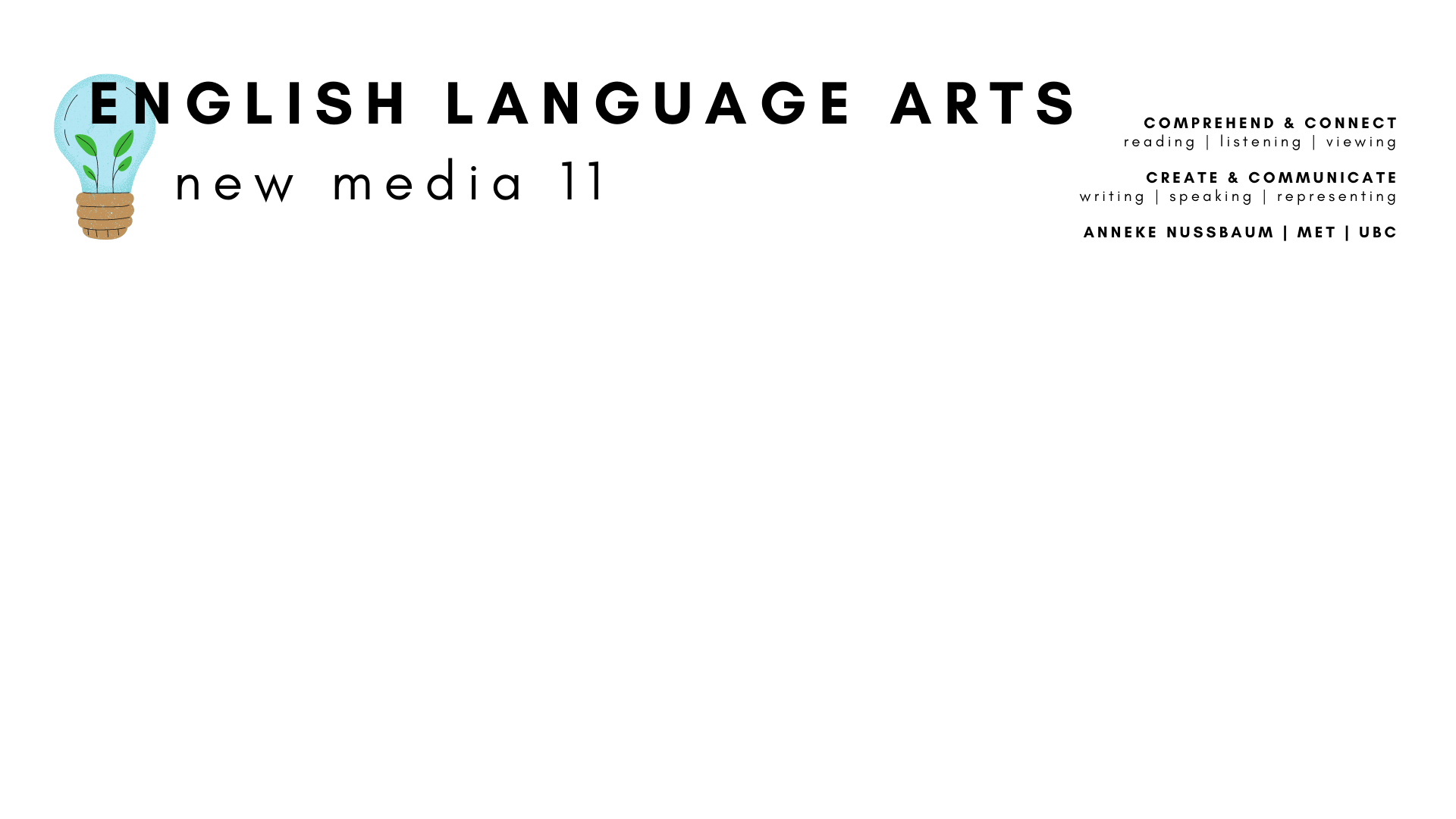This course is based on the British Columbia English Language Arts, New Media 11 Curriculum. Below you will find an outline of the big ideas we will explore in various ways throughout the modules of the course. You will also find an overview of both the core and curricular competencies we will be building through the various lessons, activities, discussions, assignments and projects.
Big Ideas

Essential Questions
- What is happening to literature in our digital society?
- What will continue to happen to literature as our society becomes more digital?
- What role does interaction play in our analysis of text?
- What makes a game a game?
- What values, identities, and actions are expressed in e-literature?
- What is the impact of representation in e-literature? Who does this impact?
- How can we view texts critically to deepen our understanding of social messages?
- How do the intersections of race, gender, and sexual orientation impact individuals accessing narrative games and digital texts?
- How do the intersections of race, gender, and sexual orientation in narrative games and digital texts construct societal ideas of identity and culture?
Curricular Competencies

Using oral, written, visual, and digital texts, students are expected individually and collaboratively to be able to:
- Read for enjoyment and to achieve personal goals
- Recognize and understand the role of story, narrative, and oral tradition in expressing First Peoples perspectives, values, beliefs, and points of view
- Recognize and understand the diversity within and across First Peoples societies as represented in texts
- Recognize the influence of land/place in First Peoples and other Canadian texts
- Access information for diverse purposes and from a variety of sources and evaluate its relevance, accuracy, and reliability
- Apply appropriate strategies in a variety of contexts to comprehend written, oral, visual, and multimodal texts, to guide inquiry and to extend thinking
- Recognize the complexities of digital citizenship
- Recognize and appreciate how various forms, formats, structures, and features of texts reflect a variety of purposes, audiences, and messages
- Think critically, creatively, and reflectively to explore ideas within, between, and beyond texts
- Recognize and identify personal, social, and cultural contexts, values, and perspectives in texts, including gender, sexual orientation, and socio-economic factors
- Recognize how language constructs personal, social, and cultural identities
- Construct meaningful personal connections between self, text, and world
- Evaluate how literary elements and new media techniques and devices reflect different purposes and audiences
- Identify bias, contradictions, distortions, and omissions

Using oral, written, visual, and digital texts, students are expected individually and collaboratively to be able to:
- Respectfully exchange ideas and viewpoints from diverse perspectives to build shared understandings and extend thinking
- Respond to text in personal, creative, and critical ways
- Demonstrate speaking and listening skills in a variety of formal and informal contexts for a range of purposes
- Select and use a variety of media appropriate to purpose, audience, and context
- Select and apply an appropriate oral language format for an intended purpose
- Use digital and multimedia writing and design processes to plan, develop, and create engaging and meaningful literary, imaginative, and informational texts for a variety of purposes and audiences
- Express and support an opinion with evidence
- Reflect on, assess, and refine texts to improve clarity, effectiveness, and impact according to purpose, audience, and message
- Use the conventions of Canadian spelling, grammar, and punctuation proficiently and as appropriate to the context
- Use acknowledgements and citations to recognize intellectual property rights
- Transform ideas and information to create original texts, using various genres, forms, structures, and styles
Core Competencies

